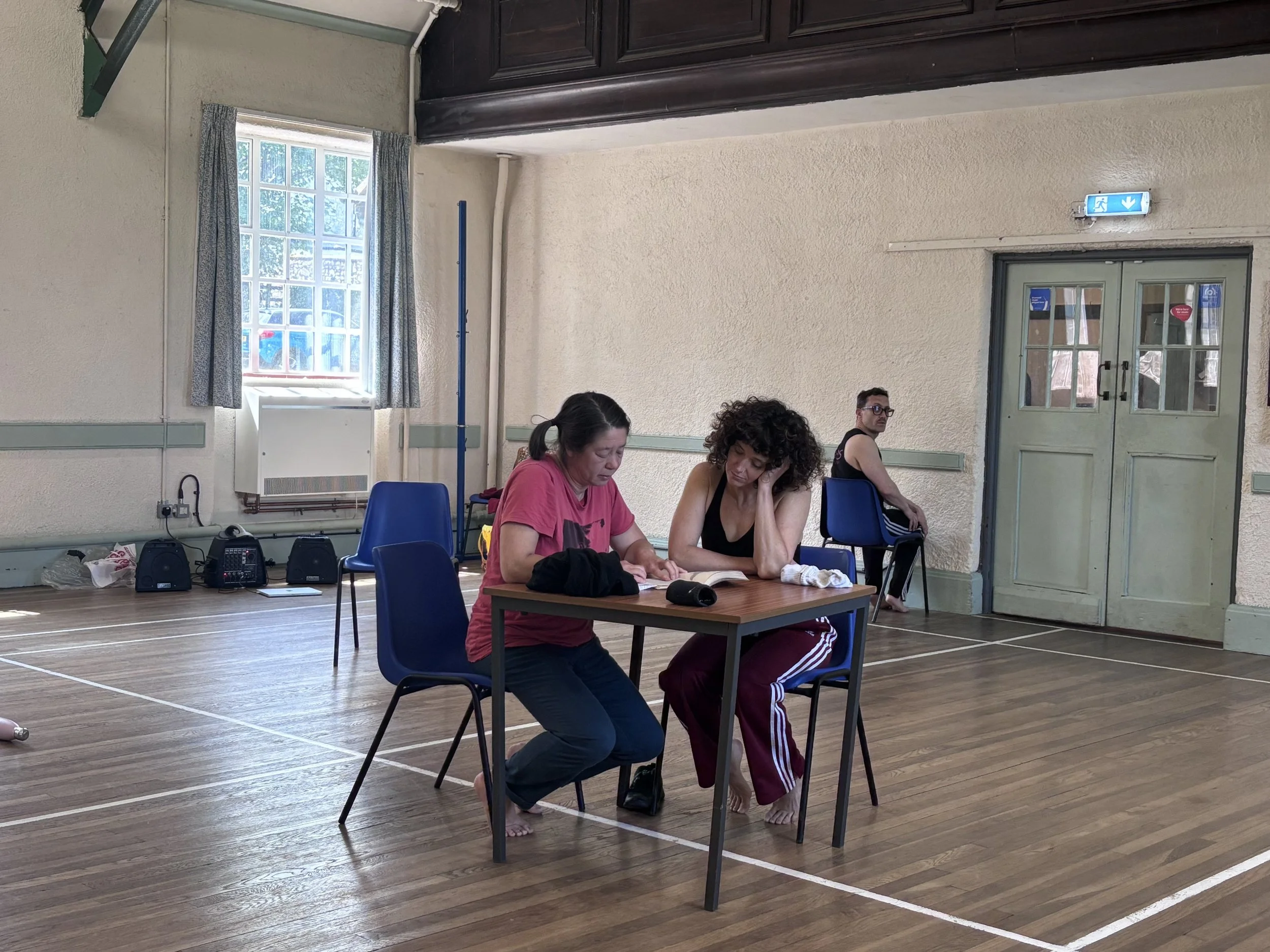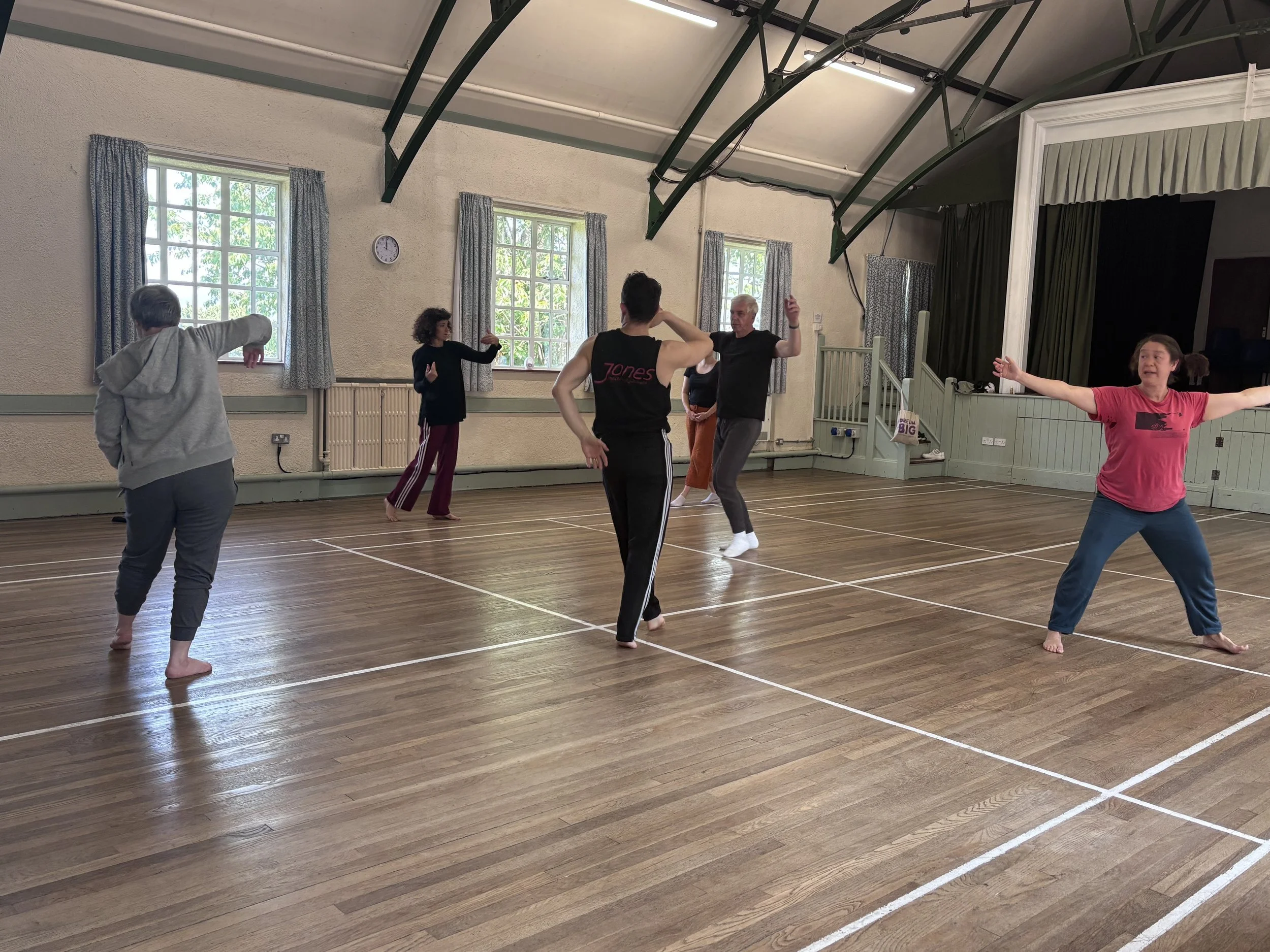Week 7 - Spatial Set-up and Audiences by Gwyn
Gwyn writes about week 7
This week we were invited to return to the fictional work we designed in week 5, tasked with thinking about the audience set-up.
Thinking about audiences is perhaps our major commonality (in my opinion); the communal meeting point between three different artists with three different approaches from three different lived and artistic experiences.
The fictional work we returned to was Resist - the work inspired by and would live-inside-of/with/refer-to/support/grow-out-of ‘1880 That’ by Christine Sun Kim and Thomas Mader.
We took to mapping the exhibition in Neuadd Eleanor. Anna guided this from memory and photos. We recreated the 11 stations out of the objects in the room - tables, chairs, clothes, badminton net poles, and yoga mats.
Anna gave us a tour, highlighting how the artefacts took different shapes and their meanings, and how some of them created sounds. We talked about how these sounds could be experienced by Deaf audiences.
Over the week we created scores using the room and its objects which is how we imagined the audience would experience the work - through a multiple sensory experience - vibrations, sight, touch, composing their own experience….
We incorporated the previous week’s tasks and outcomes:
Vibrations
Resistance
Breaking the space
Lightness
Sensation
Non-stopping
Objects
In relation (to each other)
Some new tasks we added in were:
(Chair) View Points
Room sound composition (inspired by Rachel Tess’s sound score using the room and the objects it contains for people lying down) We found the vibrations from the wonderfully sprung floor offered us a way to experience sound in new ways when lying down.
We each had a go at setting the space with the other two aiding their experience of the space, which they had created. It led to composition, stories, fraughtness, pleasure, excitement, sensory overload, a sense of how a looping structure could work and discussions on consent.
We got to test ideas with a few local dance colleagues, in the open space session. These are always a highlight, take us in new directions but also suggests or reaffirms the direction we are going….
We had to describe what the fictional work was like as fictional audience members, answering a series of questions:
What did you feel on arrival?
What was your experience?
How were your access requirements met?
What was the atmosphere /feeling?
What were you drawn to?
What emotions came up for you?
Who else was in the audience?
These are the kinds of questions we ask all the time. This week has put them into focus. With the exception of one thing:
Consent.
This is layered over how we are thinking about each other, the work, the performers we will work with and the audiences that will experience it.
A couple of questions arose for me, which, thinking back, can be asked about the whole experience of being in a collective - What happens when you don’t get what you hoped for? Is it just as good? Do you miss what you didn’t get or is what you got better?
Written by Gwyn





